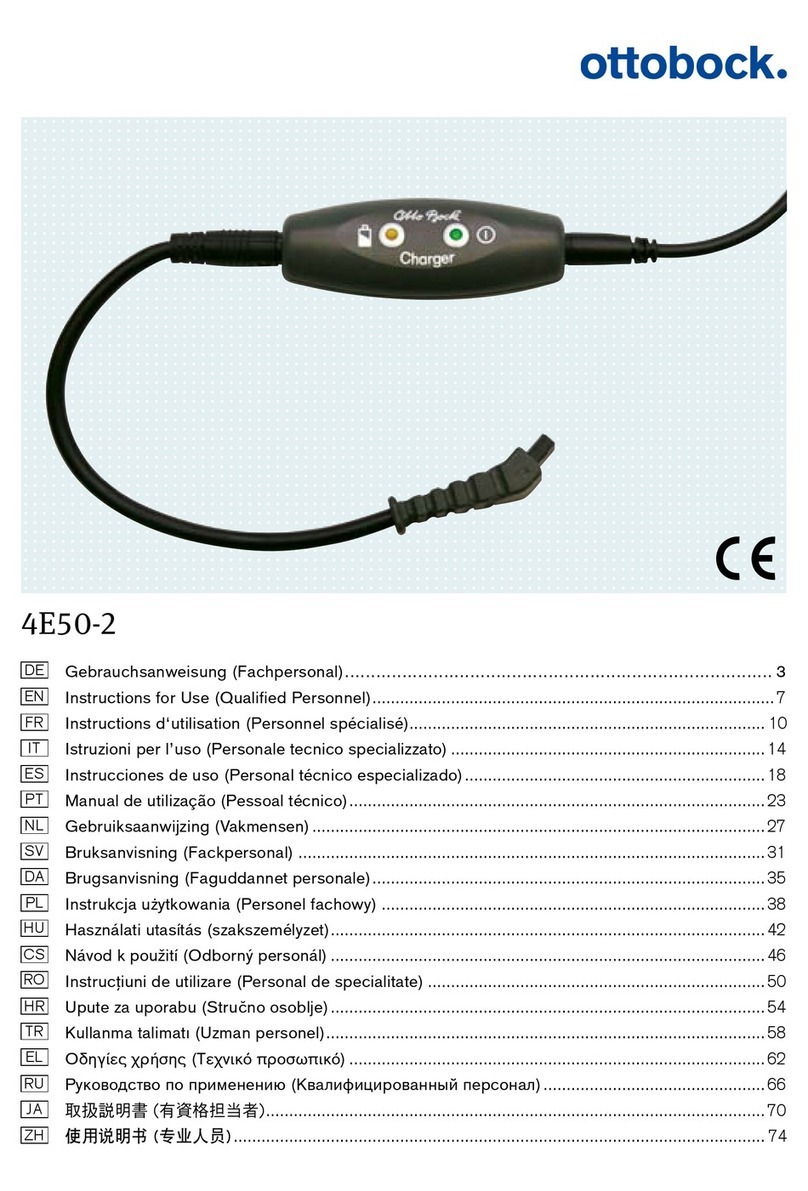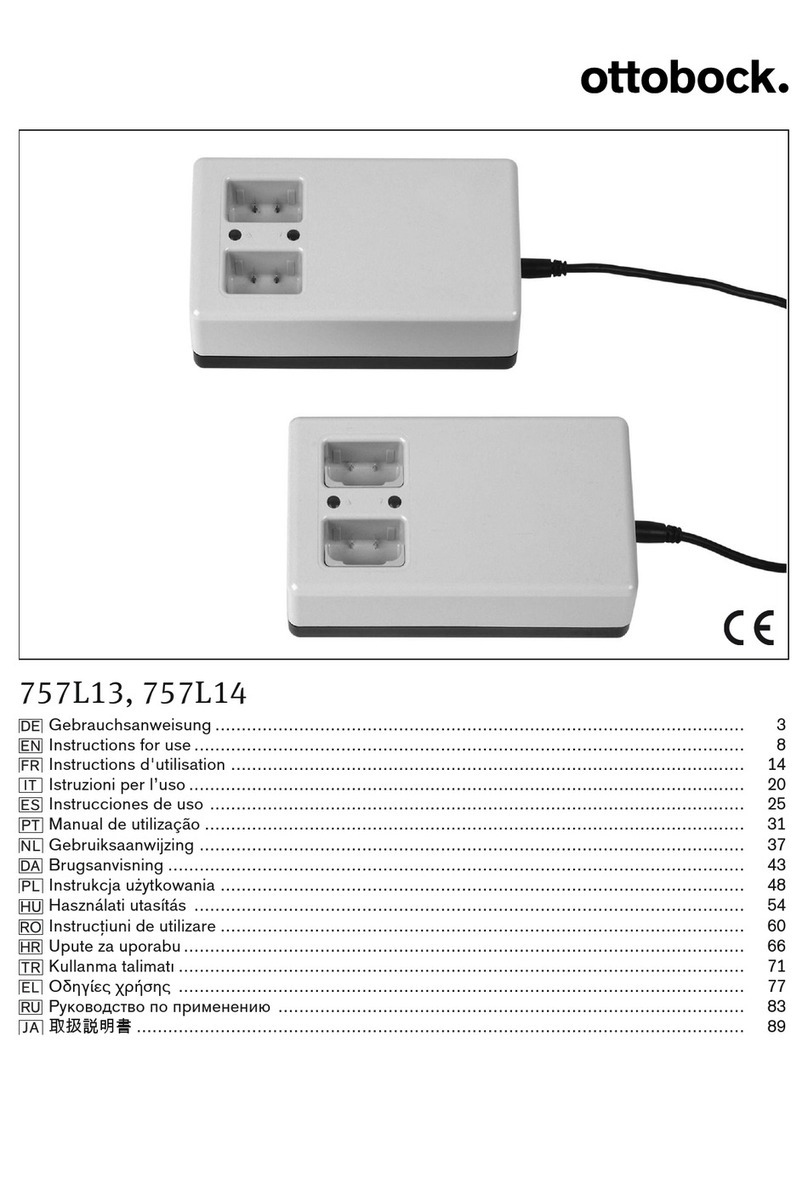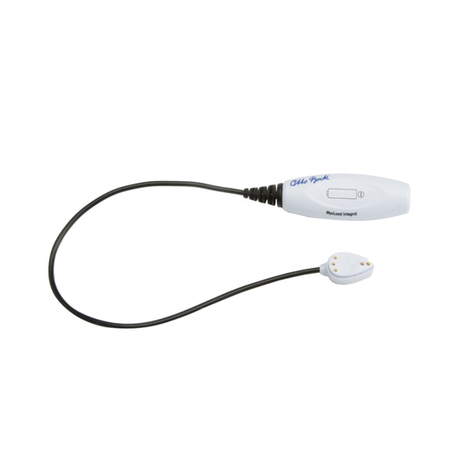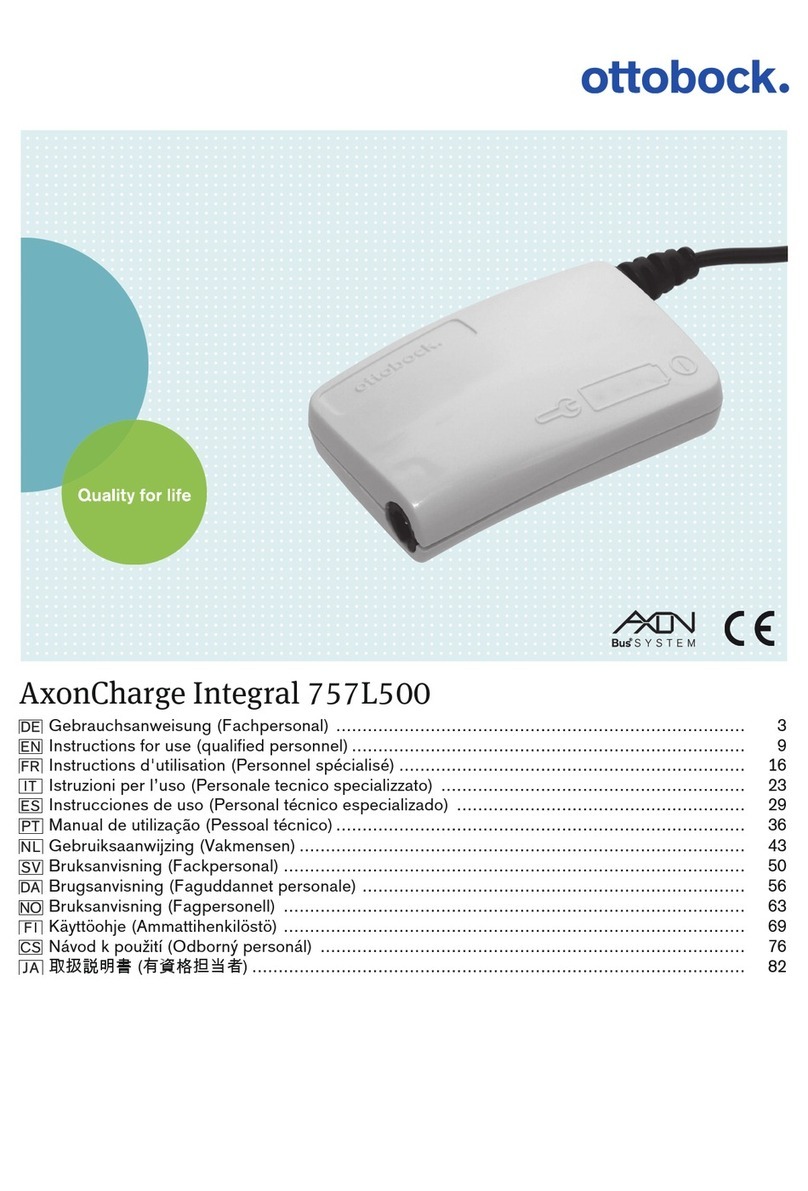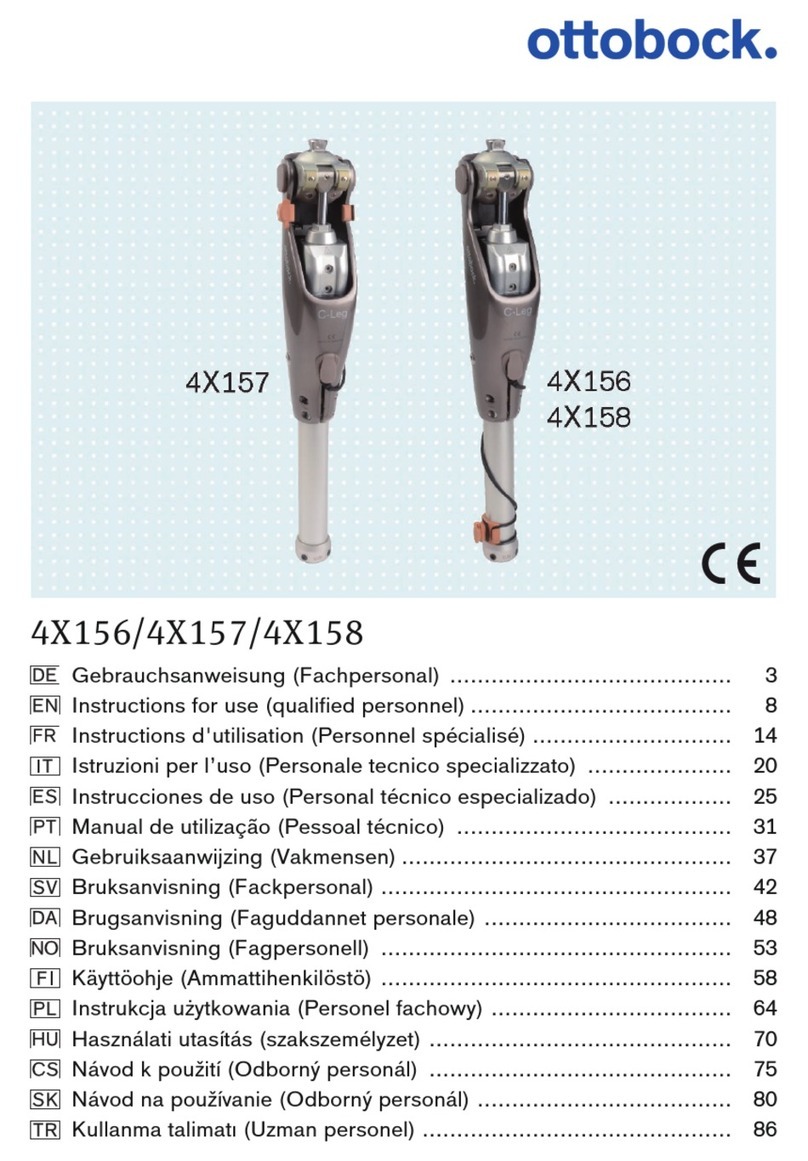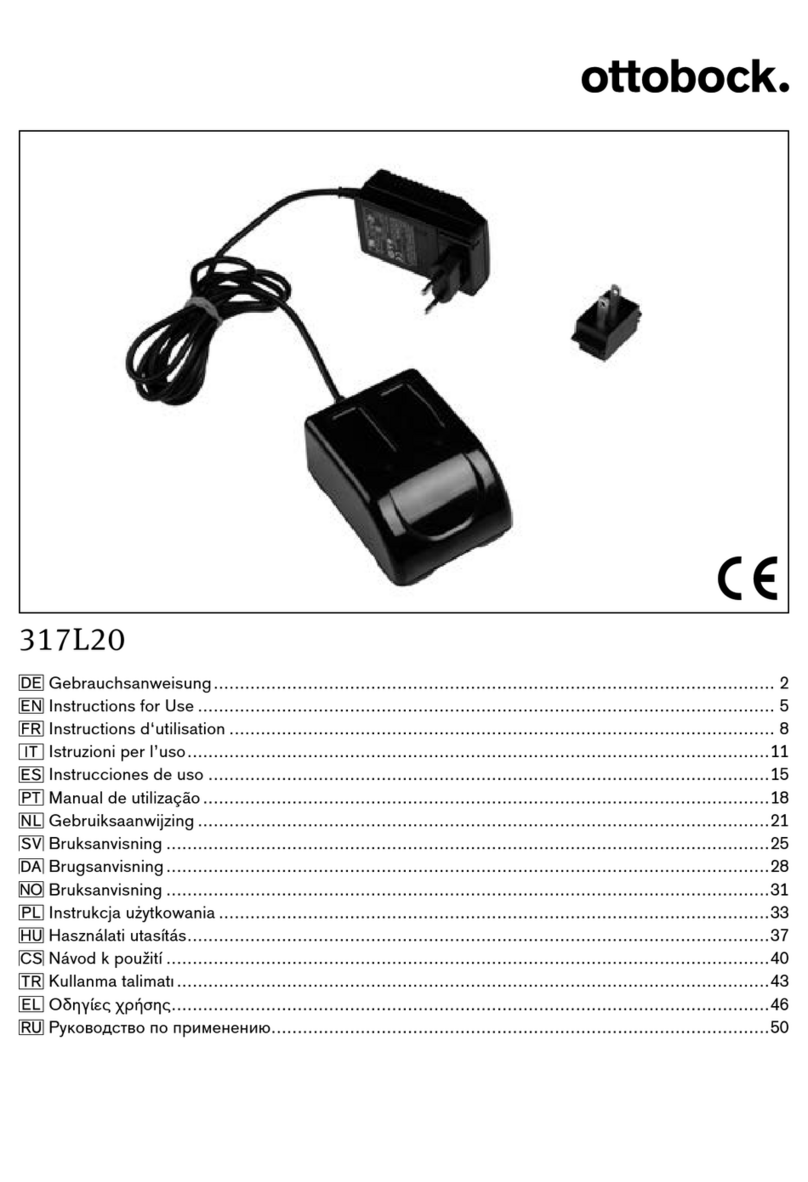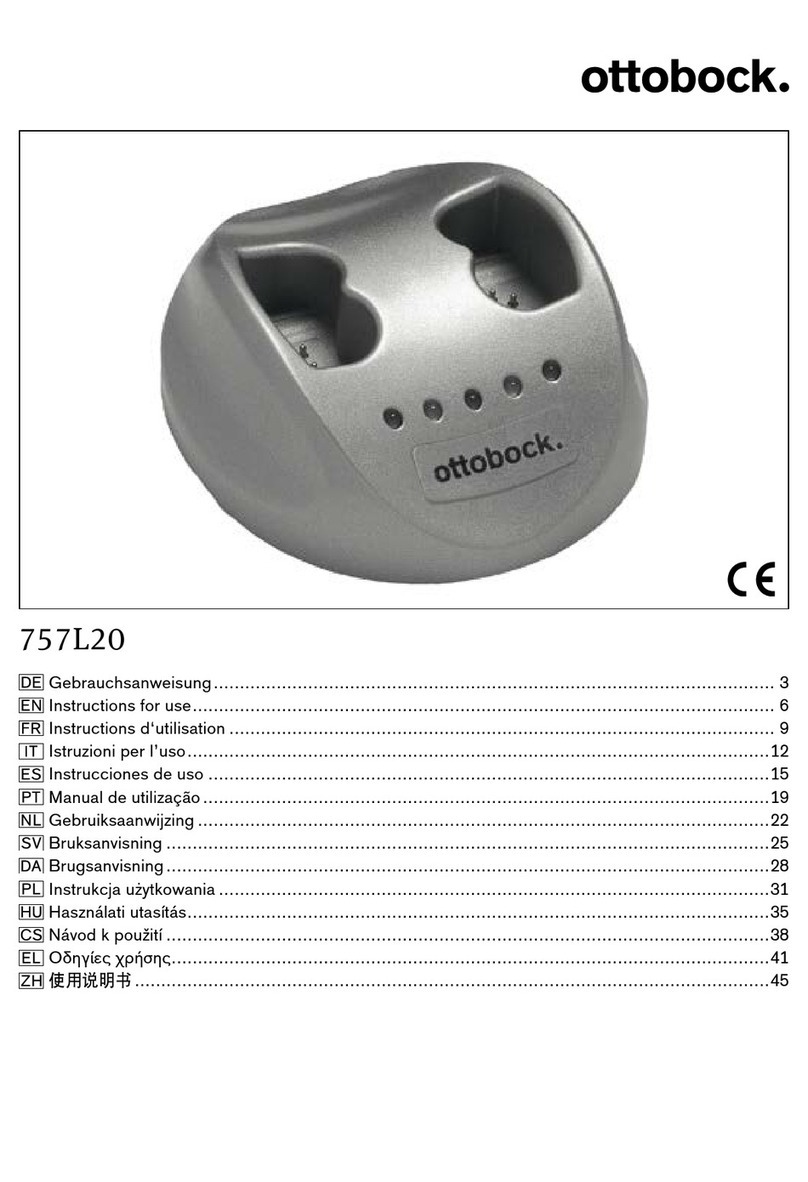
8
Ladegerät Ursache Abhilfe
Die Serviceintervalle sind abhängig
von der Benutzungsdauer des Axon-
Bus Prothesensystems. Ein regelmä
ßiger Service innerhalb des Garantie
anspruchs ist jedoch notwendig.
Wird ein Service ausgelassen, er
lischt der Garantieanspruch.
Das Ladegerät oder das Netz
teil ist defekt.
Das Produkt an den Ottobock Myo-
Service senden.
9 Rechtliche Hinweise
Alle rechtlichen Bedingungen unterliegen dem jeweiligen Landesrecht des Verwenderlandes und
können dementsprechend variieren.
9.1 Haftung
Der Hersteller haftet, wenn das Produkt gemäß den Beschreibungen und Anweisungen in diesem
Dokument verwendet wird. Für Schäden, die durch Nichtbeachtung dieses Dokuments, insbe
sondere durch unsachgemäße Verwendung oder unerlaubte Veränderung des Produkts verur
sacht werden, haftet der Hersteller nicht.
9.2 Markenzeichen
Alle innerhalb des vorliegenden Dokuments genannten Bezeichnungen unterliegen uneinge
schränkt den Bestimmungen des jeweils gültigen Kennzeichenrechts und den Rechten der jewei
ligen Eigentümer.
Alle hier bezeichneten Marken, Handelsnamen oder Firmennamen können eingetragene Marken
sein und unterliegen den Rechten der jeweiligen Eigentümer.
Aus dem Fehlen einer expliziten Kennzeichnung, der in diesem Dokument verwendeten Marken,
kann nicht geschlossen werden, dass eine Bezeichnung frei von Rechten Dritter ist.
9.3 CE-Konformität
Hiermit erklärt Otto Bock Healthcare Products GmbH, dass das Produkt den anwendbaren euro
päischen Vorgaben für Medizinprodukte entspricht.
Das Produkt erfüllt die Anforderungen der RoHS-Richtlinie 2011/65/EU zur Beschränkung der
Verwendung bestimmter gefährlicher Stoffe in Elektro- und Elektronikgeräten.
Der vollständige Text der Richtlinien und Anforderungen ist unter der folgenden Internetadresse
verfügbar: http://www.ottobock.com/conformity
10 Technische Daten
Umgebungsbedingungen
Lagerung (mit und ohne Verpackung) +5°C/+41°F bis +40°C/+104°F
max. 85% relative Luftfeuchtigkeit, nicht kon
densierend
Transport (mit und ohne Verpackung) -20°C/-4°F bis +60°C/+140°F
max. 90% relative Luftfeuchtigkeit, nicht kon
densierend
Betrieb -5°C/+23°F bis +45°C/+113°F
max. 95% relative Luftfeuchtigkeit, nicht kon
densierend

